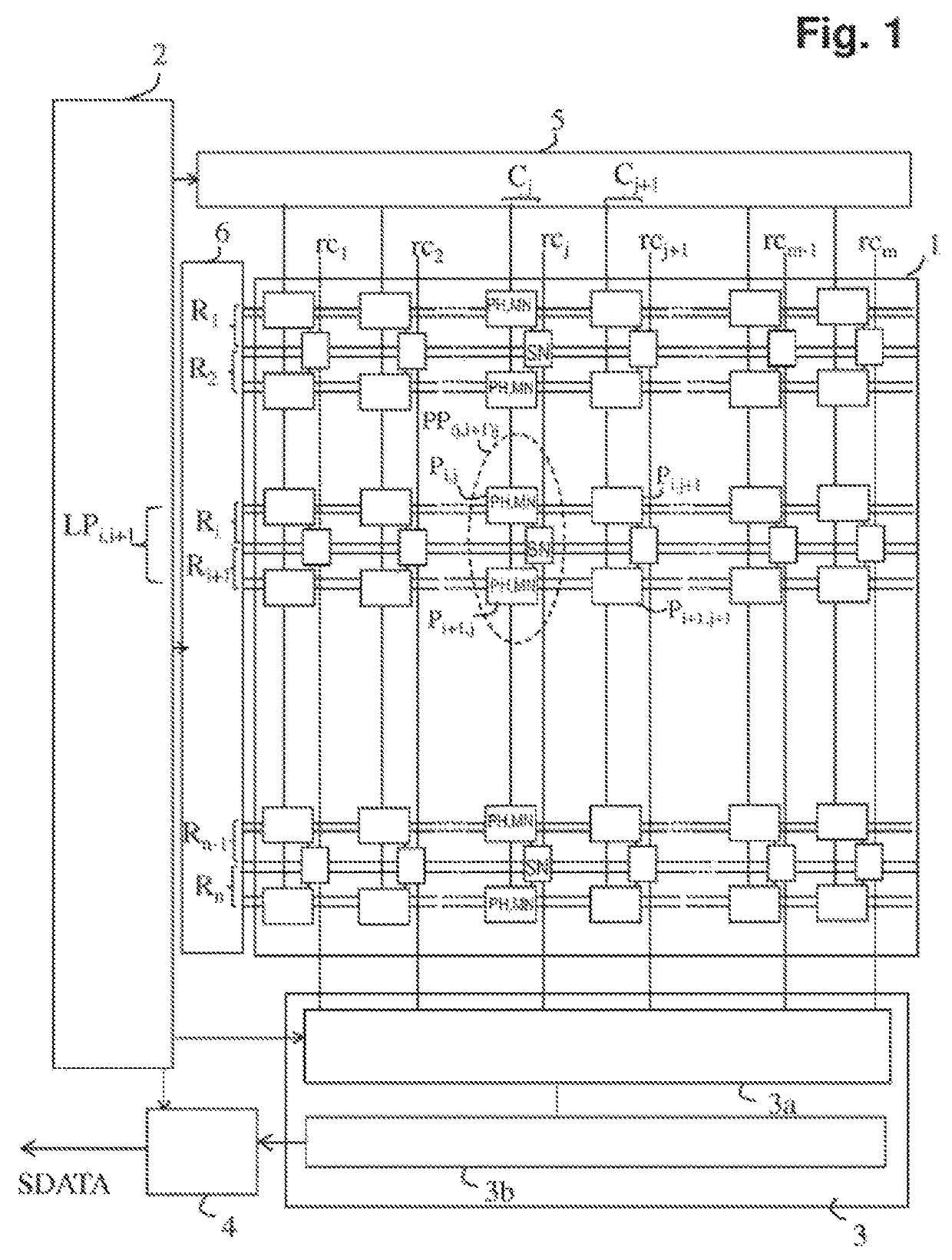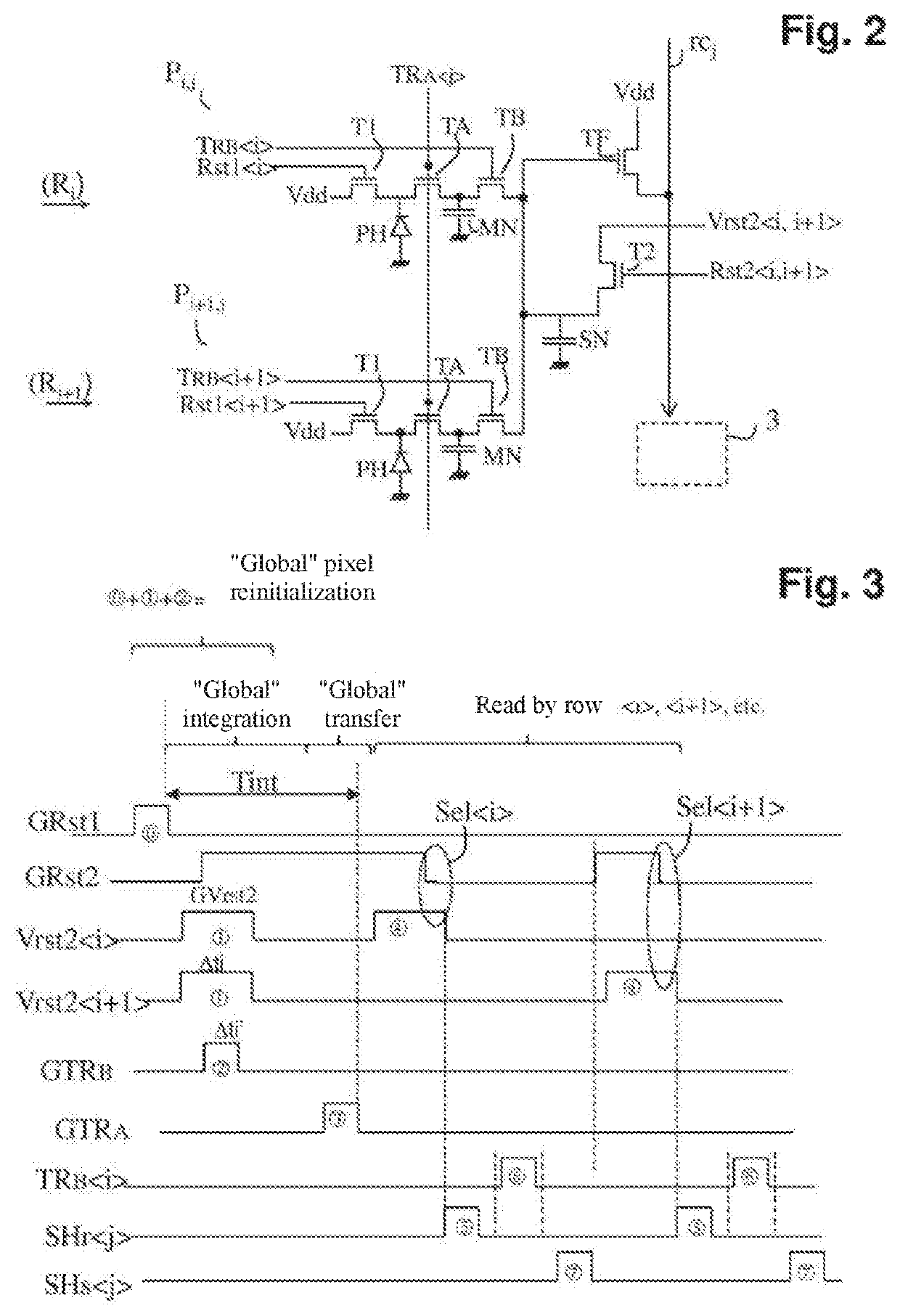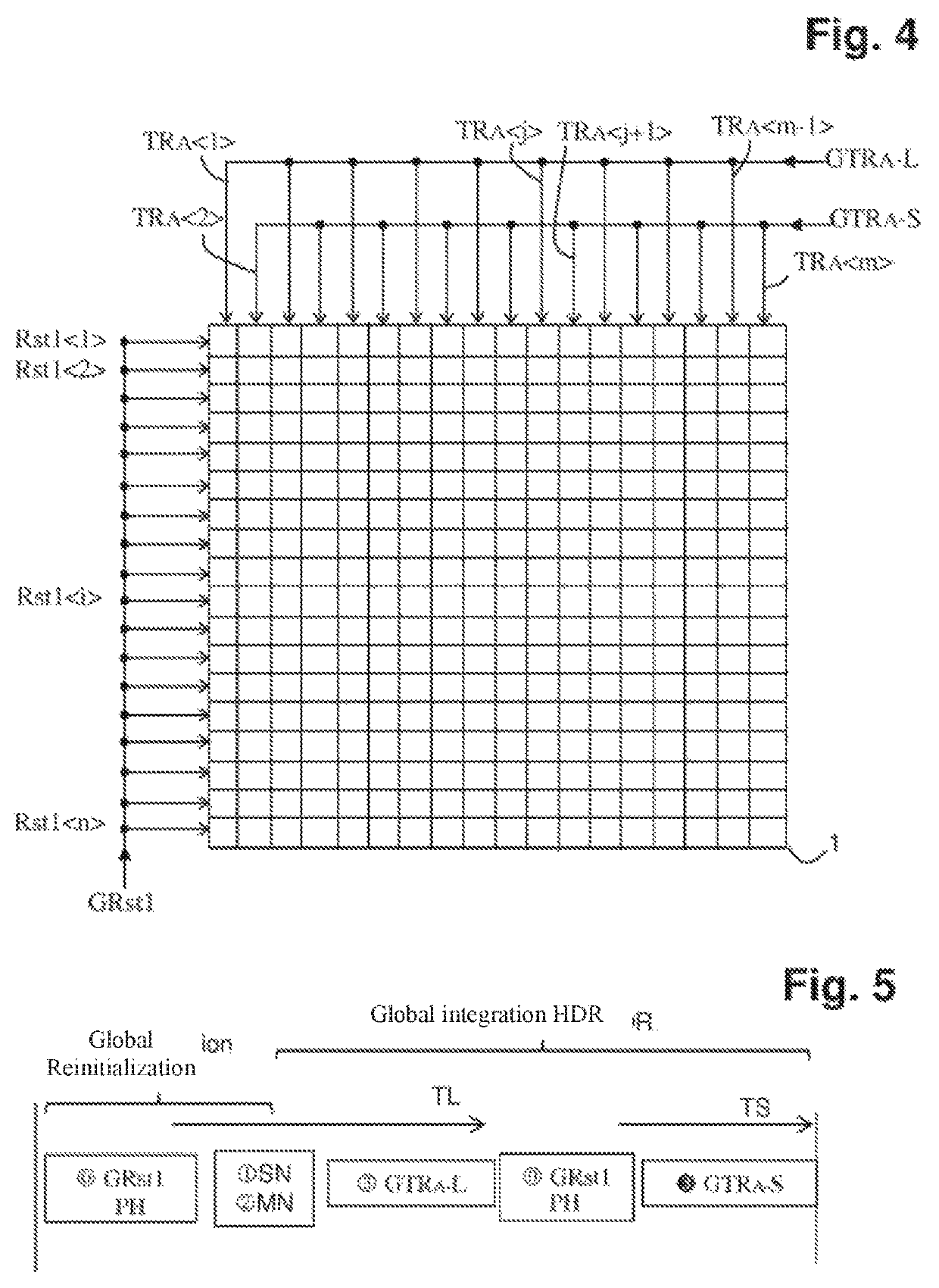High-dynamic image sensor
a high-dynamic, image sensor technology, applied in the field of image sensors, can solve the problems of loss of information, inability to compare signals, and inability to detect the dynamic range of the sensor, and achieve the effect of optimizing the frame rate and low cos
- Summary
- Abstract
- Description
- Claims
- Application Information
AI Technical Summary
Benefits of technology
Problems solved by technology
Method used
Image
Examples
Embodiment Construction
[0047]As illustrated in FIG. 1, an image sensor according to the invention includes a matrix 1 of active pixels Pi,j arranged in rows R; and columns Cj, with i=1 to n j=1 to m, n and m being whole numbers. For a given application, the acquisition of an image can use all the rows and columns of the matrix, or some of the rows and columns corresponding to particular zones of interest. These different uses are conventional and are covered by the present invention. An active pixel is a pixel which includes transistors around the photosensitive element making it possible to control the different phases of integration and reading of the pixel.
[0048]The image sensor includes a controller 2 which is configured so as to control the transistors of the active pixels, a read circuit 3 and a digital processing block 4, in such a manner as to carry out the different sequences for integration, reading and shaping of the output flow of image data for each image sensing.
[0049]The read circuit 3 comp...
PUM
 Login to View More
Login to View More Abstract
Description
Claims
Application Information
 Login to View More
Login to View More - R&D
- Intellectual Property
- Life Sciences
- Materials
- Tech Scout
- Unparalleled Data Quality
- Higher Quality Content
- 60% Fewer Hallucinations
Browse by: Latest US Patents, China's latest patents, Technical Efficacy Thesaurus, Application Domain, Technology Topic, Popular Technical Reports.
© 2025 PatSnap. All rights reserved.Legal|Privacy policy|Modern Slavery Act Transparency Statement|Sitemap|About US| Contact US: help@patsnap.com



